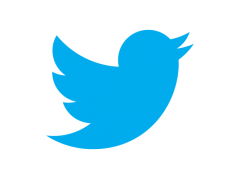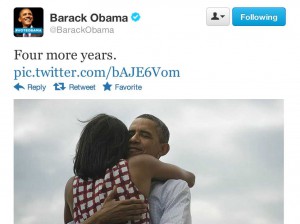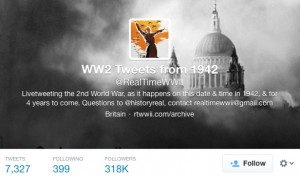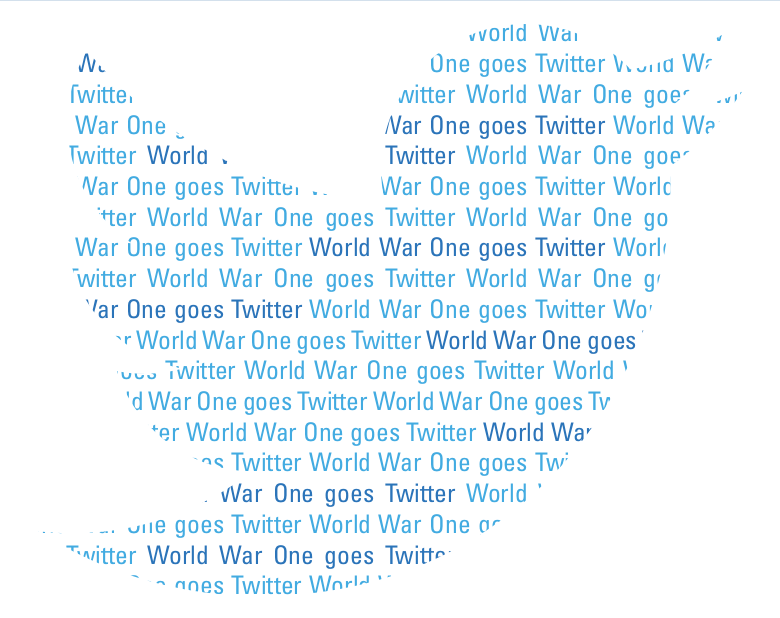Avantages et désavantages de Twitter
Les étudiants de la première année du Master en histoire européenne contemporaine de l’Université du Luxembourg se sont penchés sur les pros & contras du réseau social Twitter. Ses vertus sont synthétiquement mises en avant, tout comme ses défauts.
Initialement, Twitter était perçu comme un Facebook limité au statut personnel, donnant la possibilité à chacun de ses utilisateurs de publier des instantanés de leur vie à chaque moment. Une habitude héritée de la vogue du blogging, apparue en 2004. Twitter a été défini dès le départ comme un outil de microblogging, plutôt taillé pour la communication instantanée. Instantanéité, temps réel, les deux mantras de Twitter qui bouleversent considérablement le monde de la communication.
 Le dernier logo de Twitter lancé le 6 juin 2012
Le dernier logo de Twitter lancé le 6 juin 2012
Selon Wikipedia, Twitter est un « outil de réseau social et microblogage qui permet à un utilisateur d’envoyer gratuitement de brefs messages, appelés tweets (« gazouillis ») sur Internet, par messagerie instantanée ou par SMS. Ces messages sont limités à cent quarante caractères ».
La recette de Twitter semble simple : une alchimie entre individus qui échangent en continu au fil des heures sur tous les sujets possibles et imaginables, sans hiérarchie, sans tabous, sans contrainte autre que la limite des cent quarante caractères que peut contenir un message. Twitter permet à tout le monde de réagir à propos de tout à tout moment.
Le premier tweet fut envoyé le 21 mars 2004 par Jack Dorsey, un des créateurs du site de microblogging. En février 2012, Twitter a franchi le cap des 500 millions d’utilisateurs. Le 7 novembre 2013, Twitter fait son entrée en bourse.
Un réseau social comme les autres ou un outil utile ?
Comme le font remarquer les étudiants du master, Twitter n’est pas la seule plateforme offrant l’interaction sociale sur le web. Dans un monde où les tendances changent rapidement, tout système risque de perdre sa popularité selon les évolutions techniques ou les effets de mode.
Twitter est actuellement très utilisé par les « célébrités », ce qui pousse leurs « fans » à s’y inscrire. Le réseau social est également très prisé chez les journalistes et les politiques. La réélection de Barack Obama à la Maison Blanche le 6 novembre 2012 est une étape supplémentaire franchie dans l’appropriation de Twitter par les politiques. En un tweet accompagné d’une photo de lui-même enlaçant sa femme, Michelle, avec un message laconique : « Four more Years », Obama a non seulement annoncé sa réélection de façon élégante, mais a en plus battu à l’époque le record du message le plus retweeté de l’histoire récente de Twitter ! Plus de 500.000 RT (retweets) en quelques heures.
 Le tweet de Barack Obama lors de son élection le 6 novembre 2012
Le tweet de Barack Obama lors de son élection le 6 novembre 2012
Le record a été battu lors de la cérémonie des Oscars en 2014 à travers d’un désormais connu « selfie » qui quant à lui fut retweeté plus de 3,3 millions de fois. En ce qui concerne le tweet d’Obama, les dirigeants politiques du monde entier avaient adressé leurs félicitations au président américain à partir de leur compte Twitter.
En France, l’affaire du célèbre tweet de Valérie Trierweiler fit couler beaucoup d’encre. Lors des élections législatives de juin 2012, Valérie Trierweiler, alors compagne de François Hollande, président de la République, envoya un message de soutien à l’adversaire de Ségolène Royale, ex-femme de François Hollande. Ce dernier avait pourtant manifesté son soutien à Ségolène Royale. Le tweet a fini par être supprimé, mais le mal était fait. Cela démontre la force de twitter et nous met en garde contre son côté irréversible. Par erreur, un simple tweet peut atteindre des millions d’internautes et provoquer quelques émois.
 Le tweet de Valérie Trierweiler (ancienne compagne de François Hollande) qui causa beaucoup de malaise au sommet de l’Etat français
Le tweet de Valérie Trierweiler (ancienne compagne de François Hollande) qui causa beaucoup de malaise au sommet de l’Etat français
Les étudiants du Master en histoire européenne contemporaine mettent aussi en évidence le côté didactique de Twitter. Ils citent comme exemple le compte @RealTimeWW1 créé par leur collègues de l’an dernier et inspiré du compte @RealTimeWW2. Dans les deux cas, on y découvre les deux guerres mondiales en temps réel à travers des tweets basés sur des sources fiables. Il existe un grand nombre de comptes thématiques et à caractère didactique sur Twitter.
Néanmoins, Twitter peut aussi présenter quelques inconvénients. Nos données personnelles peuvent être saisies par des hackers et notre identité usurpée. Twitter peut également faciliter la circulation de virus. Pour les utilisateurs plus effrénés, Twitter peut devenir une addiction. Ce microblogging peut se révéler une source de distraction et avoir un impact négatif sur notre travail.
D’une manière générale, Twitter présente plus d’avantages que d’inconvénients. Tout dépend de l’usage que chacun lui prête. Toutefois, Twitter et autres réseaux sociaux ne devraient jamais se substituer à une vie sociale normale. Surtout, il convient de garder à l’esprit le fait qu’une fois émis, le message nous échappe, qu’il sera amplifié, parfois détourné et déformé, suscitant des réactions d’enthousiasme, de haine et de mépris.
Des Tweets qui auraient fait histoire
Et si Twitter était plus vieux qu’il ne l’est réellement ? Et s’il avait accompagné l’histoire tout au long des derniers siècles. Comment auraient tweeté nos ancêtres ? En faisaint appel à notre culture générale, imaginons quelques tweets qui sans doute auraient fait histoire:
@MartinLutherKIng : I have a #dream #civilrights
@JFK: Ich bin ein #Berliner
@NeilArmstrong: One small step for a man, one giant leap for mankind #WalkingOnTheMoon
@LouisXIV: L’Etat c’est moi #RoiSoleil
@General_de_Gaulle: Paris ! Paris outragé ! Paris brisé ! Paris martyrisé ! Mais #Paris libérée !
@LouisXVI : C’est une révolte ? #PrisedelaBastille
@LaRochefoucauld: Non sire, ce n’est pas une révolte, c’est une révolution ! #PrisedelaBastille
@GeorgeW.Bush : Je sais que l’être humain et le poisson peuvent coexister pacifiquement #aphorismes
@GeorgeW.Bush : Je veux simplement que vous compreniez que lorsque nous parlons de guerre, nous parlons vraiment de paix #aphorismes
Review by Nuno LUCAS DA COSTA & Adrien CHETTER of the Master in European Contemporary History, 2nd & 1st year, summer term 2013/2014, University of Luxembourg




